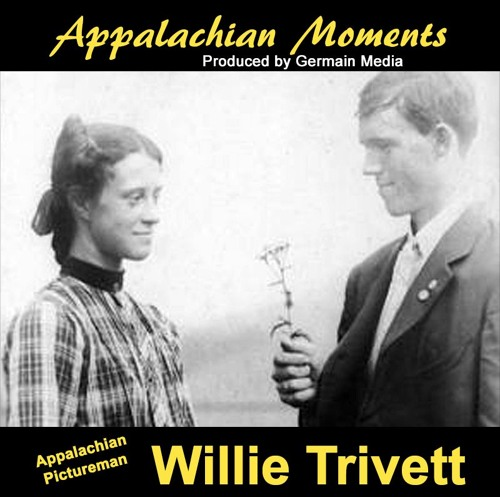A Farmer, sawmiller, carpenter and sheriff’s deputy…Willie Trivette’s enduring legacy is that he was one of many self-taught photographers in the hills and hollers of Appalachia. His story, along with other “picturemen” illuminate the truest portraits of the Blue Ridge faces and places of his time. And we owe a great debt of gratitude to Professor Ralph Lentz who brought this story to life in his book, WR Trivette: Appalachian Pictureman.
Of the 460 photos found in Trivette’s collection, 425 are portraits of some form or fashion. It stands to reason; views of the mountain landscape were abundant, readily available and easy to take for granted.
Of those portraits, photos of children were his best sellers. Some of them depict the stereotype of being barefoot, and wearing patched overalls…The image is quaint but not romantic according to the late storyteller Ray Hicks, who spent many barefoot summers in the 1920s and 30s. He believed that the romantic notion of happy barefoot boys must have come from city folks, not the people who had walk those rocky hillsides. In his words, “My feet would get calloused and hard, but that didn’t keep them from getting cut and bruised. My toes would sometimes scoot under rocks and tear the nails clean off. Barefoot boys: Quaint maybe; painful…certainly.
The entirety of Trivette’s photography becomes even more telling when viewed in the light of comparison to other Appalachian photos from that same era. Images of long bearded old men in worn and outdated clothes were offered as accurate to the American public.
What Trivette recorded represents something very different and more complex…even though his goal was simple, to make the photos “good and plain” to please his customers.
I think we can be certain that the Appalachian people in Willie Trivette’s photos did not think of themselves as backwards, poor or illiterate. Think about it…how many of you would be willing to pose for a photograph that you knew beforehand would depict you in an unflattering light?
In fact, it was the other way around. His subjects trusted Trivette to accurately depict life in the moment, as it was…true and honest.
It’s worth noting that a few subjects intentionally poked fun at the stereotypes, of which they were well aware. Patrons would sometimes amuse themselves by staging photos with guns and moonshine that toyed with the stereotypes and preconceptions of the cityfied tourist, or social reformer come to help all those poor people. Self-deprecating humor was alive and well in Trivette’s day.
His photos also show that his mountain community had much in common with contemporary America, yet his subjects managed to bridge the gap of staying connected to their pioneer ancestors. These folks were living examples of something we long for today: The ability to embrace the advances of our culture, while still holding onto the roots and traditions of the past.
If you’d like to hear the audio version of our blog post, please click the link below (our audio versions have been listened to over 25,000 times!), and as always thanks for liking, commenting and sharing these posts with your friends!

